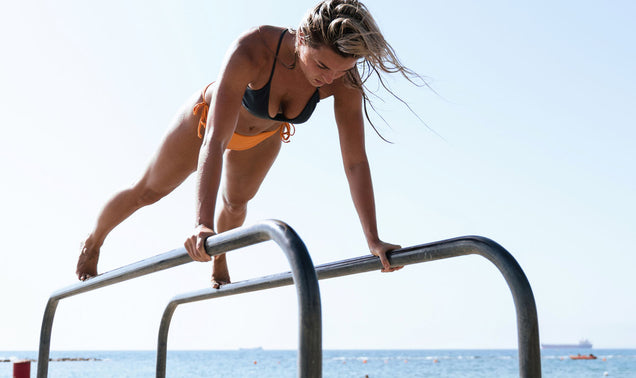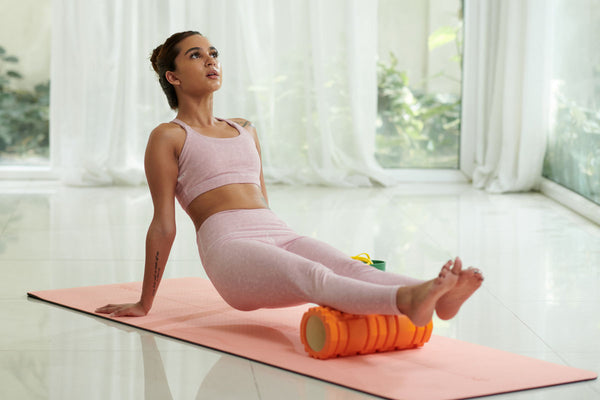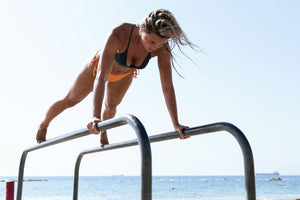Let’s be real -- many of us get a bit antsy, anxious and unsettled when it’s “off day” from the gym. Yes, we know that rest days are critical to the repair, recovery and growth process, but there’s that little voice that won’t stop chirping (“nagging”) that we should be doing something, anything to improve our fitness and well-being.
Fortunately, for some of us, doing absolutely nothing on a rest day is perfectly fine and a key part of getting results from hard training. But, you can still do certain “workouts” during your off days from resistance training or HIIT cardio workouts that can scratch the itch of being physically active without hindering your body’s ability to recover and prepare itself for the next intense training session.
These lower intensity workouts are considered “active recovery.” Not only do they help you to stay active on your technical “off days” they also offer a wide range of benefits.
We’ve got three active recovery workouts for your next rest day if you’re like us, and you want to be doing something each and every day of the week!
First, let’s briefly describe what active recovery workouts are (as well as what they are NOT).
What is Active Recovery?
Active recovery basically involves performing low-level physical activity with the purpose of increasing movement, enhancing blood flow & circulation, and clearing metabolic waste products generated from your intense workouts.
It’s an excellent way to help your muscles recover after a workout, but the key is to make sure that your active recovery workouts are not too intense or too long in duration. Otherwise, they could lead to further muscle breakdown or slow down your body's ability to fully recover before your next hard workout.
Basically, the main benefits of active recovery workouts are they help to minimize delayed onset muscle soreness (DOMS) by improving blood flow and clearing away the damaged proteins that accumulate during intense exercise. They also help to alleviate the mental struggles many of us have that taking a complete rest day will cause us to hit a plateau, delay progress, or gain fat.
If you need further encouragement as to why active recovery workouts are beneficial, consider this -- scientific research notes that active recovery can even help clear lactate from your blood, which reduces post-workout muscle soreness.[1] This, in turn, accelerates the recovery process and helps you become stronger more quickly for your next training session.
So, if you're looking to recover faster and be at your best for your next hard workout, then active recovery is the way to go!
3 Active Recovery Workouts to Try on Your Next Rest Day
The main goal of active recovery workouts is to perform low-level activity (i.e. nothing too intense to where you’re exhausted and glycogen depleted). These off day workouts can make you break a sweat, but you should also feel invigorated, motivated, and capable to tackle your next intense training session tomorrow!
#1 Hiking/Walking Outdoors
Being outdoors is one of the most overlooked, yet most beneficial, ways to be active, increase calorie burning, and improve your recovery. Simply stepping outside and going for a walk or hike (if you have trails nearby) can do wonders for your mental and physical well-being. You’ll also help reduce stress, boost mood, and get some vitamin D which supports hormone health and immune function!
As an added bonus, going for a walk/hike can be done anywhere, requires no equipment or expensive gym membership and fits just about every fitness level!
#2 Foam Rolling
Foam rolling, also known as myofascial release, is an excellent active recovery workout. It involves using a foam roller (or other implement, such as a lacrosse ball) to massage your muscles, promote relaxation, and increase circulation.
To get started with foam rolling, it may be helpful to perform a light warm up (e.g. jumping jacks, jumping rope, going for a 10-minute walk, etc.) to get your blood flowing.
Then, when you start foam rolling, be mindful of which muscles are sore/tight.
To get the most benefits of foam rolling, it’s important to move slowly and methodically. Rushing through the process may not be as effective and could even cause discomfort or increased soreness. If an area feels tight or painful, focus on that spot and hold the pressure for a few seconds and remember to breathe deeply, leaning into the discomfort.
BUT, don't push too hard, especially if you're new to foam rolling as it may lead to bruising as well as an inability to workout the next day.
#3 Bodyweight Workouts for Active Recovery
Bodyweight exercises are fundamental movement patterns that take your body through large ranges of motion and mimic basic movements you perform each and every day. They also have the added bonus of increasing tendon, ligament and muscle strength and stability as well as increasing circulation, which helps to reduce soreness and even burn a few extra calories.
Again, the key with bodyweight exercises (and all other active recovery day activities) is to do enough to “get the blood flowing” but not so much that you feel gassed and unable to perform at a high level tomorrow in the gym.
Here’s one of our favorite active recovery bodyweight workouts:
- Jumping Jacks -- 50 reps
- Inchworm to Pushup -- 10 reps
- Plank With T Rotation -- 10 reps (5/side)
- Bodyweight Squat -- 25 reps
- Glute Bridge -- 15 reps
- Wall Slides (or floor slides) -- 10 reps
- Rest for 60 seconds then repeat this circuit for a total of 3-5 rounds (depending on your level of conditioning)
The Bottom Line on Active Recovery Workouts
Rest and recovery is essential to getting results from your weekly workouts as well as during your transformation challenge.
Taking recovery seriously starts with scheduling it in your current weekly workout plan. If you’re a “go-getter” who has a hard time taking a true “off day”, then it’s imperative that you make active recovery and rest days a priority, just like you do for your workouts, business meetings, etc..
It may also be helpful to plan specific active recovery workouts, such as those outlined above, so when your next rest day rolls around you already know what you’re supposed to do. That way, you’re not tempted to waste any physical or mental resources (which detract from recovery) deciding what to do on those days.
Remember that active recovery and rest days are important and necessary. You’re not “slacking” when taking a rest day or active recovery day. Rest and recovery is essential as it helps to recharge your mind and body so that when you step back into the gym, you’re ready to give it everything you’ve got.
Lastly, if you need help figuring out what to do on rest days (or any other training day), then make sure to download the 1UP Fitness App where we offer FREE customized training and nutrition plans tailored to your preferences and specific goals so you can get the results you want!
References
- Paul Menzies, Craig Menzies, Laura McIntyre, Paul Paterson, John Wilson & Ole J. Kemi (2010) Blood lactate clearance during active recovery after an intense running bout depends on the intensity of the active recovery, Journal of Sports Sciences, 28:9, 975-982, DOI: 10.1080/02640414.2010.481721






